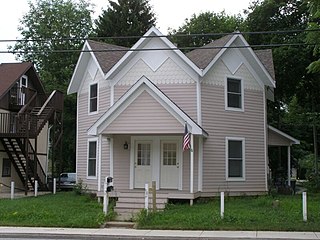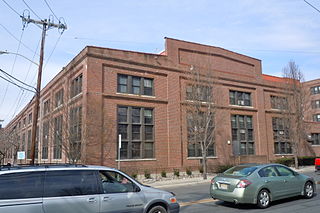 W
WIndiana, a state in the Midwest, played an important role in supporting the Union during the American Civil War. Despite anti-war activity within the state, and southern Indiana's ancestral ties to the South, Indiana was a strong supporter of the Union. Indiana contributed approximately 210,000 Union soldiers, sailors, and marines. Indiana's soldiers served in 308 military engagements during the war; the majority of them in the western theater, between the Mississippi River and the Appalachian Mountains. Indiana's war-related deaths reached 25,028. Its state government provided funds to purchase equipment, food, and supplies for troops in the field. Indiana, an agriculturally rich state containing the fifth-highest population in the Union, was critical to the North's success due to its geographical location, large population, and agricultural production. Indiana residents, also known as Hoosiers, supplied the Union with manpower for the war effort, a railroad network and access to the Ohio River and the Great Lakes, and agricultural products such as grain and livestock. The state experienced two minor raids by Confederate forces, and one major raid in 1863, which caused a brief panic in southern portions of the state and its capital city, Indianapolis.
 W
WThe 32nd Indiana Monument, also known as the August Bloedner Monument, honors the Union soldiers of the 32nd Indiana Volunteer Infantry Regiment, also known as Indiana's "1st German" regiment, who died in the Battle of Rowlett's Station on December 17, 1861, near Munfordville, Kentucky. Originally placed at Fort Willich, near Munfordville, in January 1862, the monument was moved to Cave Hill National Cemetery at Louisville, Kentucky, in June 1867. Due to its fragile condition, the monument was removed from the national cemetery in 2008. After undergoing conservation treatment at the University of Louisville, it was placed on display at the Frazier History Museum lobby in August 2010. Although it is no longer in its original location, the 32nd Indiana Monument is generally considered to be the oldest surviving memorial to the American Civil War. A replacement monument at Cave Hill National Cemetery was dedicated in December 2011.
 W
WPS Alice Dean, which had a capacity of 880 tons, was a side-wheel, wooden-hulled packet steamer. It was launched from Cincinnati, Ohio, United States, in 1863, running a scheduled route between Cincinnati and Memphis, Tennessee. Its captain was James H. Pepper.
 W
WCamp Joe Holt was a Union base during the American Civil War in Jeffersonville, Indiana, across the Ohio River from Louisville, Kentucky, on land that is now part of Clarksville, Indiana, near the Big Eddy. It was a major staging area for troops in the Western Theatre of the War, in preparation for invading the Confederate States of America. Its establishment was the first major step performed by Kentucky Unionists to keep Kentucky from seceding to the Confederacy.
 W
WCamp Morton was a military training ground and a Union prisoner-of-war camp in Indianapolis, Indiana, during the American Civil War. It was named for Indiana governor Oliver Morton. Prior to the war, the site served as the fairgrounds for the Indiana State Fair. During the war, Camp Morton was initially used as a military training ground. The first Union troops arrived at the camp in April 1861. After the fall of Fort Donelson and the Battle of Shiloh, the site was converted into a prisoner-of-war camp. The first Confederate prisoners arrived at Camp Morton on February 22, 1862; its last prisoners were paroled on June 12, 1865. At the conclusion of the war, the property resumed its role as the fairgrounds for the Indiana State Fair. In 1891 the property was sold and developed into a residential neighborhood known as Morton Place, a part of the Herron-Morton Place Historic District.
 W
WCannelton Cotton Mill, also known as Indiana Cotton Mill, is a National Historic Landmark of the United States located in Cannelton, Indiana, United States. Built in 1849 as an effort to expand textile milling out of New England, it was the largest industrial building west of the Allegheny Mountains, designed by Thomas Alexander Tefft, an early industrial architect. It was declared a National Historic Landmark in 1991. The building now houses residences.
 W
WCrown Hill National Cemetery is a U.S. National Cemetery located in Indianapolis, Marion County, Indiana. It was established in 1866 on Section 10 within Crown Hill Cemetery, a privately owned cemetery on the city's northwest side. Administered by the United States Department of Veterans Affairs, the National Cemetery encompasses 1.4 acres (0.57 ha) and serves as a burial site for Union soldiers who fought in the American Civil War.
 W
WThe David Garland Rose House was built circa 1860 in Valparaiso, Indiana, United States. David Rose was a local businessman. This Gothic Revival house is unusual in that it is eight-sided, an octagon. Each of the eight gables include decorated wood panels. Covered porches have been added to three sides.
 W
WThe Iron Brigade, also known as The Black Hats, Black Hat Brigade, Iron Brigade of the West, and originally King's Wisconsin Brigade was an infantry brigade in the Union Army of the Potomac during the American Civil War. Although it fought entirely in the Eastern Theater, it was composed of regiments from three Western states that are now within the region of the Midwest. Noted for its strong discipline, its unique uniform appearance and its tenacious fighting ability, the Iron Brigade suffered the highest percentage of casualties of any brigade in the war.
 W
WJefferson General Hospital was the third-largest hospital during the American Civil War, located at Port Fulton, Indiana and was active between February 21, 1864 and December 1866. The land was owned by U.S. Senator from Indiana Jesse D. Bright. Bright was sympathetic to the Confederates, and was expelled from his position as Senator in 1862. Union authorities took the property without compensation, similar to what happened at Arlington National Cemetery.
 W
WJeffersonville Quartermaster Intermediate Depot (JQMD) was a military warehouse located in Jeffersonville, Indiana. Originally covering four city blocks, it expanded to ten city blocks by the end of World War II.
 W
WThe Knights of the Golden Circle (KGC) was a secret society founded in 1854 by American George W. L. Bickley, the objective of which was to create a new country, known as the Golden Circle, where slavery would be legal. The country would have been centered in Havana and would have consisted of the Southern United States and a "golden circle" of territories in Mexico, Central America, northern parts of South America, and Cuba, Haiti, Dominican Republic, most other islands in the Caribbean, about 2,400 miles (3,900 km) in diameter.
 W
WThe Lightning Brigade, also known as Wilder's Brigade or the Hatchet Brigade was a novel, for the US Army, formation in the American Civil War, mounted infantry brigade in the Union Army of the Cumberland from March 8, 1863, through the November of 1863. Its regiments were nominally the 1st Brigade of Maj. Gen. Joseph J. Reynolds' 4th Division of Thomas' XIV Corps. Operationally, they were detached from the division and served as a mobile mounted infantry to support any of the army's corps. Colonel John T. Wilder was its commander. As initially organized, the brigade had the following regiments:92nd Illinois Mounted Infantry: Col. Smith D. Atkins 98th Illinois Mounted Infantry: Col. John J. Funkhouser (w), Lt. Col. Edward Kitchell 123rd Illinois Mounted Infantry: Col. James Monroe 17th Indiana Mounted Infantry: Maj. William T. Jones 72nd Indiana Mounted Infantry: Col. Abram O. Miller 18th Independent Battery Indiana Light Artillery: Capt. Eli Lilly
 W
WThis is an incomplete list of all military confrontations that have occurred within the boundaries of the modern U.S. State of Indiana since European contact. The French first entered Indiana c. 1670. The region was part of New France from 1679–1763, ruled by Great Britain from 1763–1783, and part of the United States of America 1783–present.
 W
WThe Sidney & Lois Eskenazi Hospital is a public hospital located in Indianapolis, Indiana. The hospital is the flagship medical center for Eskenazi Health, founded in 1859 as Indiana's oldest public healthcare system. The hospital is operated by Health & Hospital Corporation of Marion County. The current hospital opened December 7, 2013, less than 1,300 feet (400 m) to the west of the original campus, replacing Wishard Memorial Hospital.
 W
WVan Camp's is an American brand of canned bean products currently owned by ConAgra Foods, Inc. Their products typically consist of beans stewed in a flavored sauce. Van Camp's has for some time been the second-best selling brand of baked beans in the United States, competing with Bush's Baked Beans.